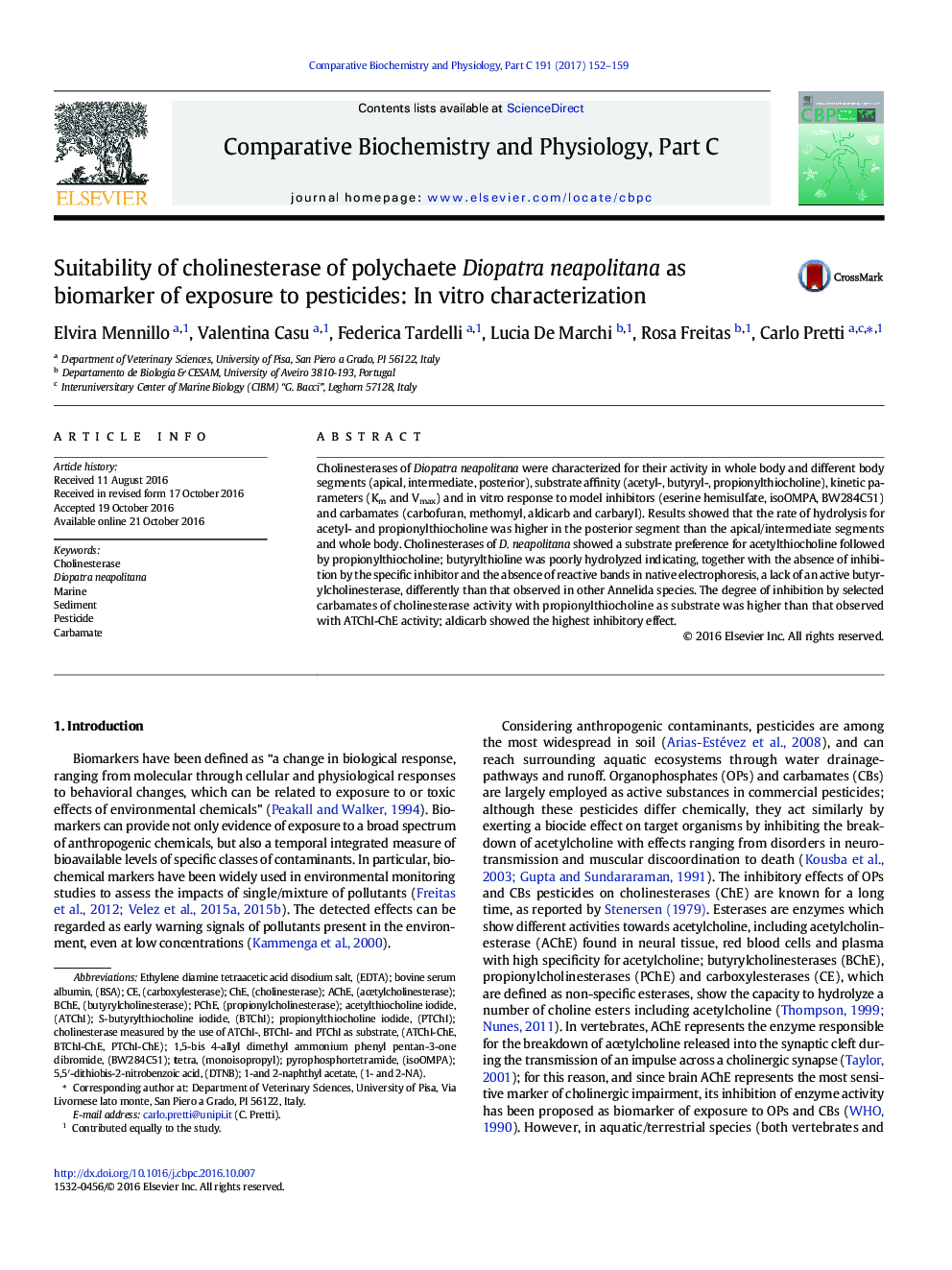| Article ID | Journal | Published Year | Pages | File Type |
|---|---|---|---|---|
| 5510649 | Comparative Biochemistry and Physiology Part C: Toxicology & Pharmacology | 2017 | 8 Pages |
Abstract
Cholinesterases of Diopatra neapolitana were characterized for their activity in whole body and different body segments (apical, intermediate, posterior), substrate affinity (acetyl-, butyryl-, propionylthiocholine), kinetic parameters (Km and Vmax) and in vitro response to model inhibitors (eserine hemisulfate, isoOMPA, BW284C51) and carbamates (carbofuran, methomyl, aldicarb and carbaryl). Results showed that the rate of hydrolysis for acetyl- and propionylthiocholine was higher in the posterior segment than the apical/intermediate segments and whole body. Cholinesterases of D. neapolitana showed a substrate preference for acetylthiocholine followed by propionylthiocholine; butyrylthioline was poorly hydrolyzed indicating, together with the absence of inhibition by the specific inhibitor and the absence of reactive bands in native electrophoresis, a lack of an active butyrylcholinesterase, differently than that observed in other Annelida species. The degree of inhibition by selected carbamates of cholinesterase activity with propionylthiocholine as substrate was higher than that observed with ATChI-ChE activity; aldicarb showed the highest inhibitory effect.
Keywords
Related Topics
Life Sciences
Biochemistry, Genetics and Molecular Biology
Biochemistry
Authors
Elvira Mennillo, Valentina Casu, Federica Tardelli, Lucia De Marchi, Rosa Freitas, Carlo Pretti,
